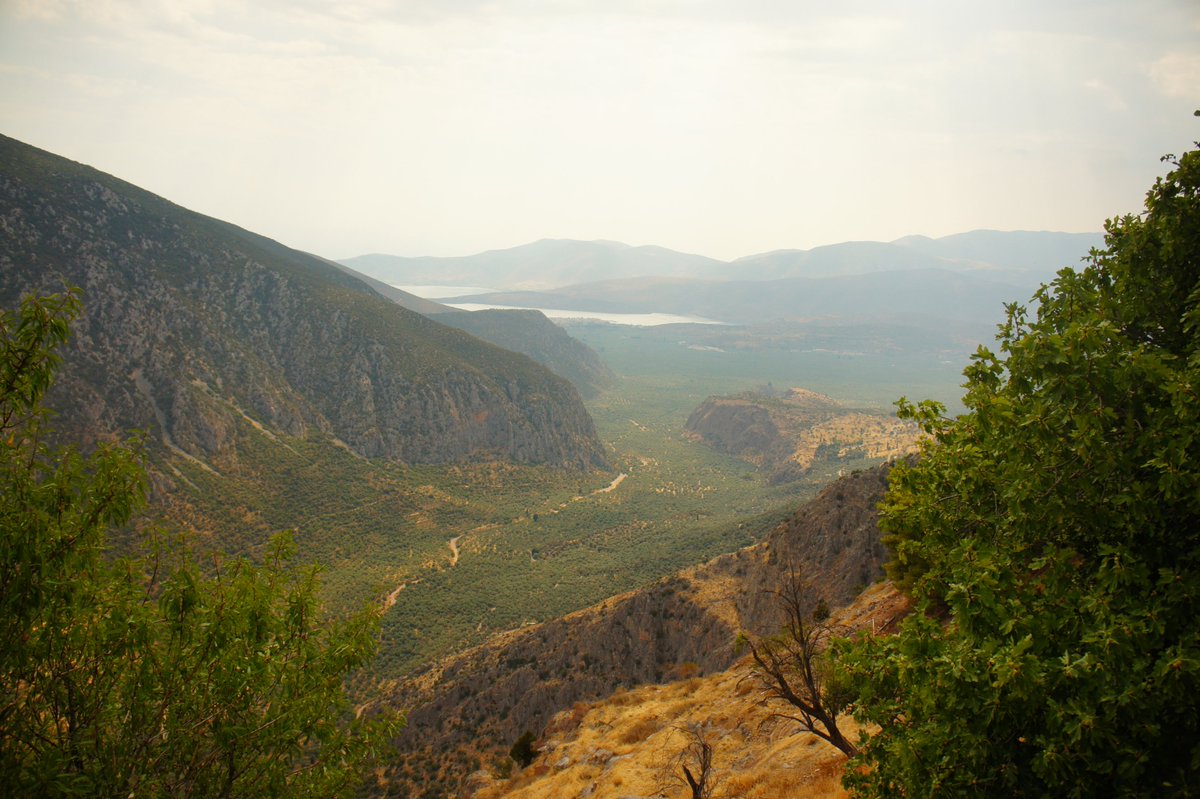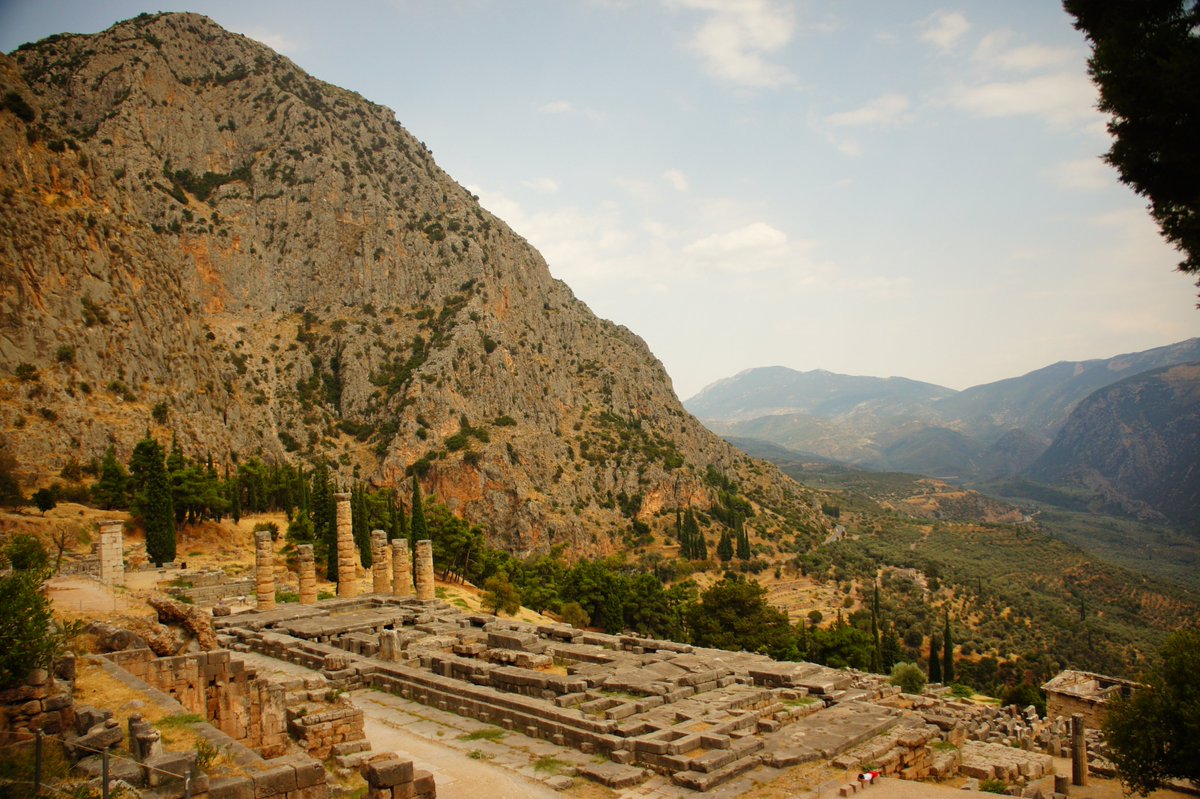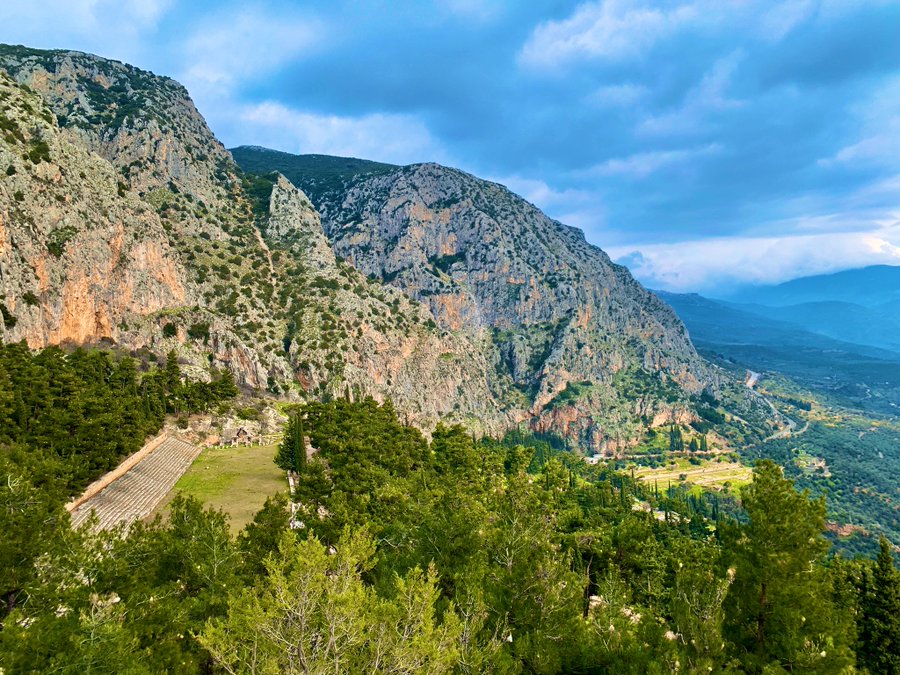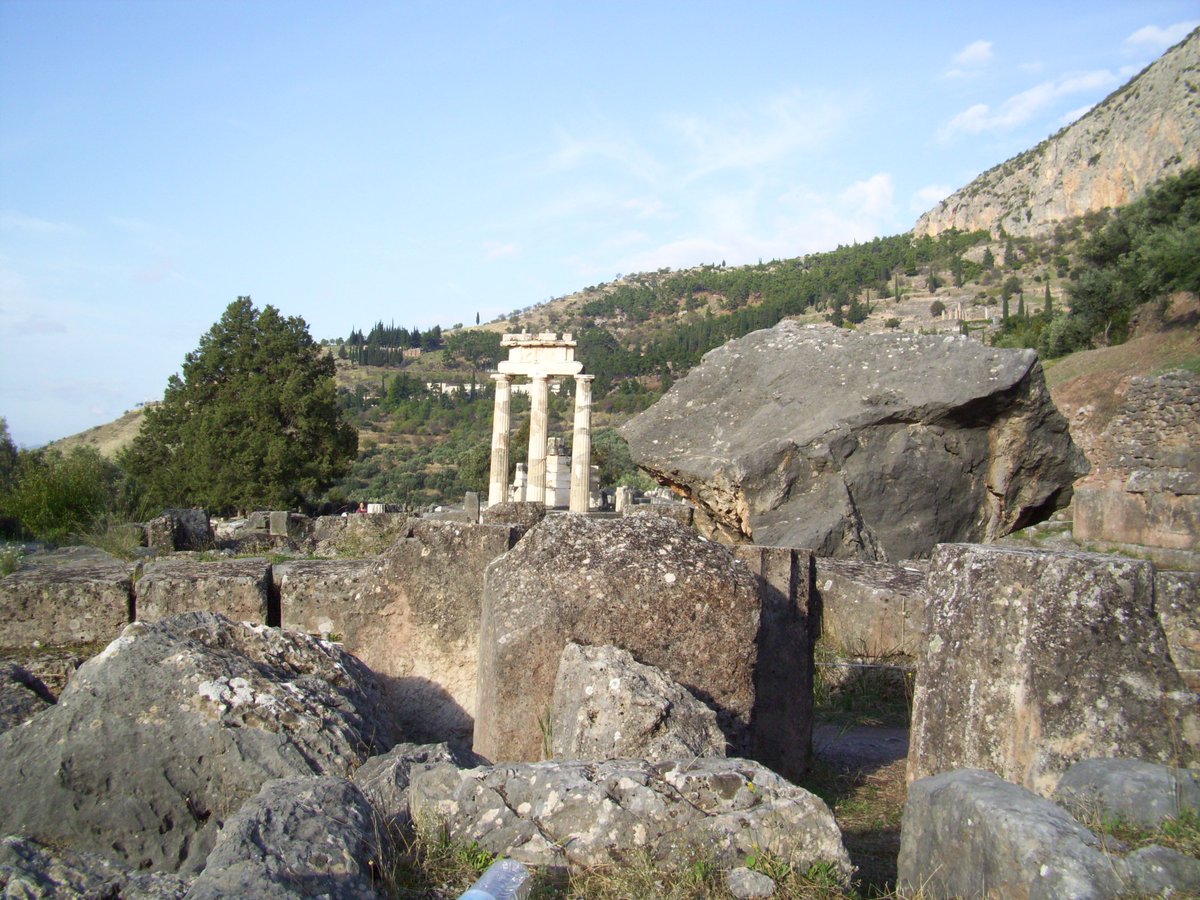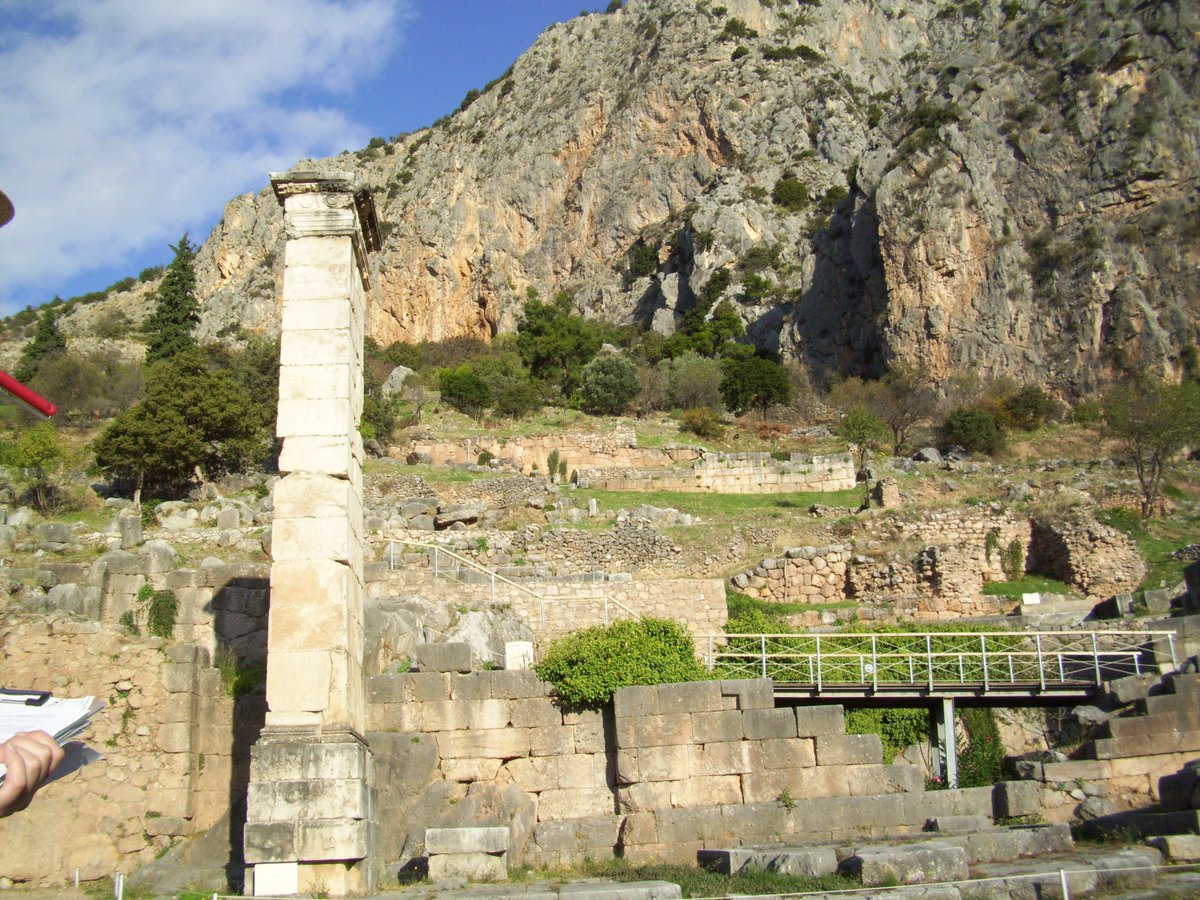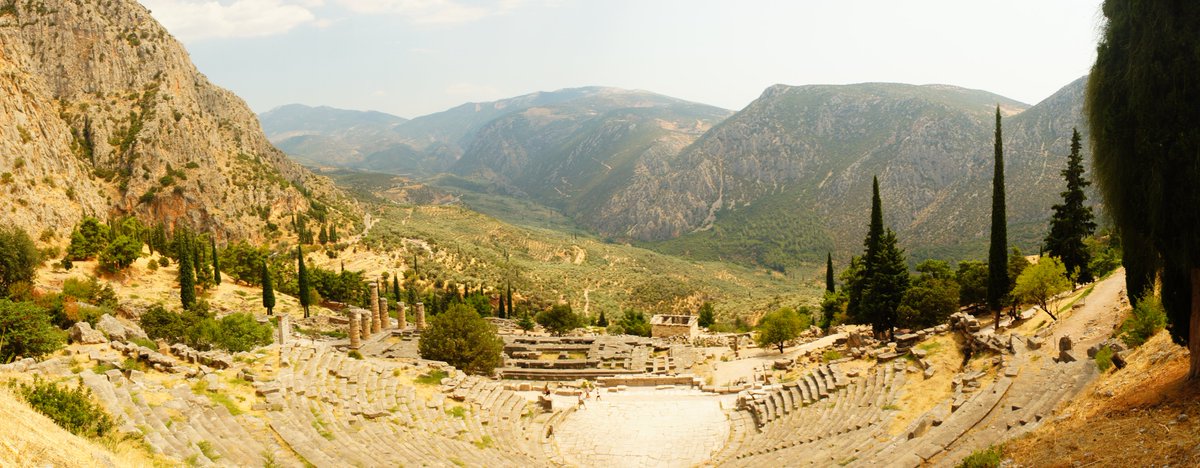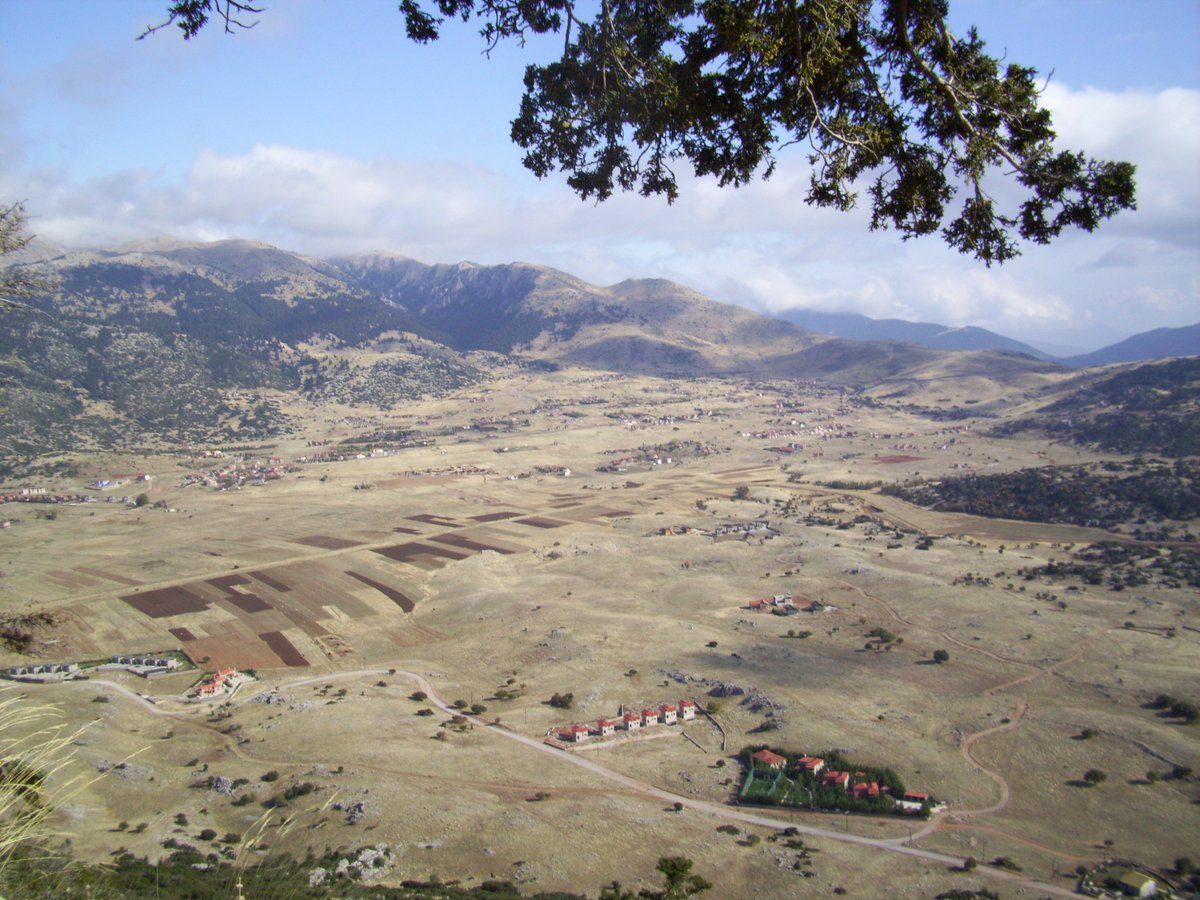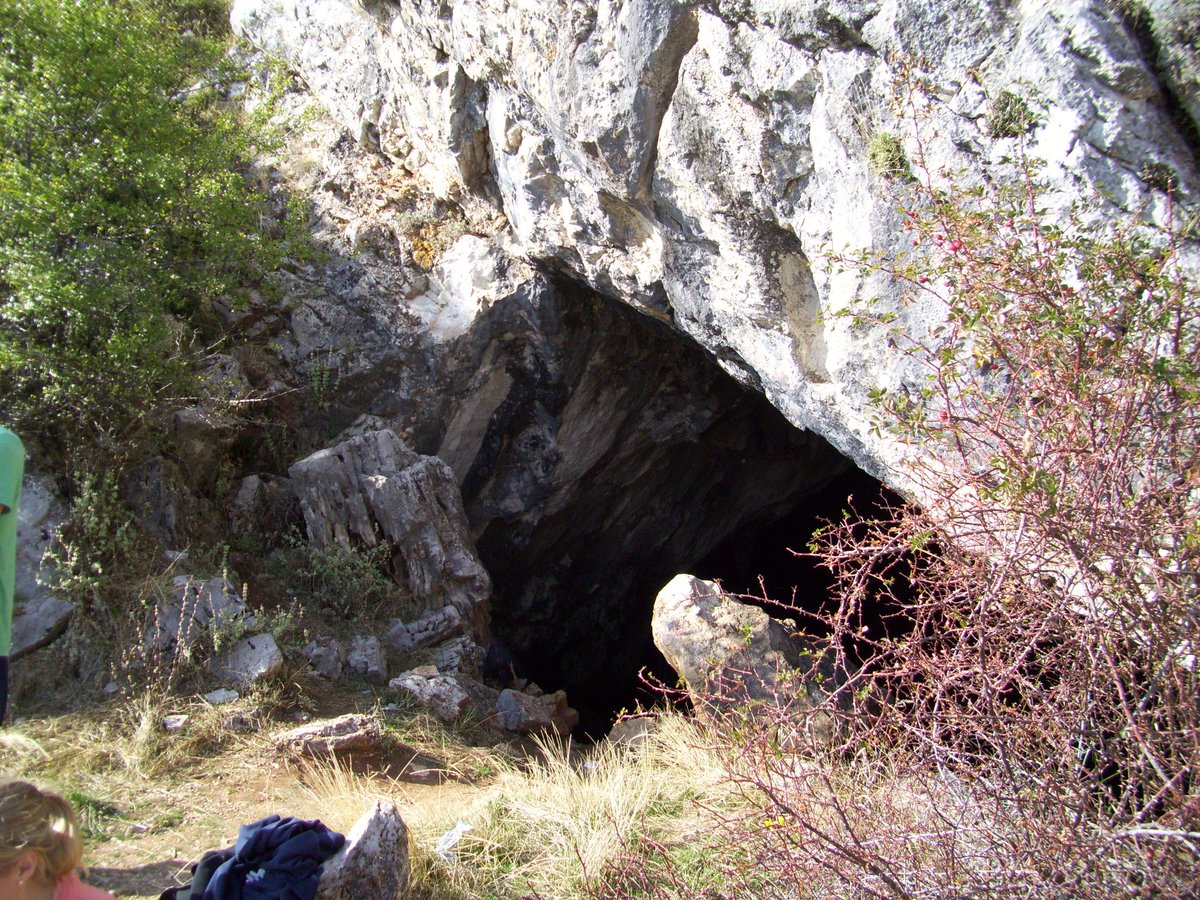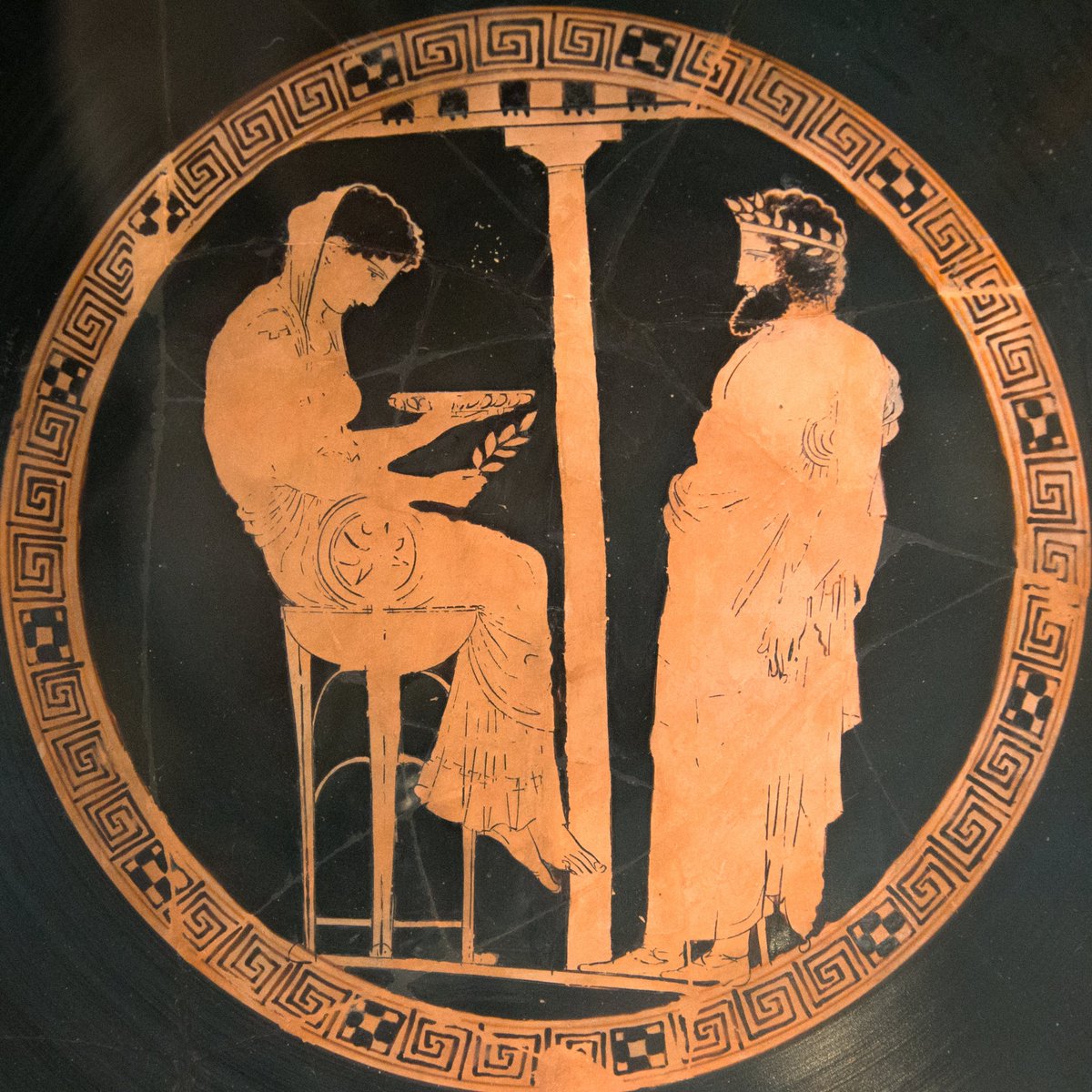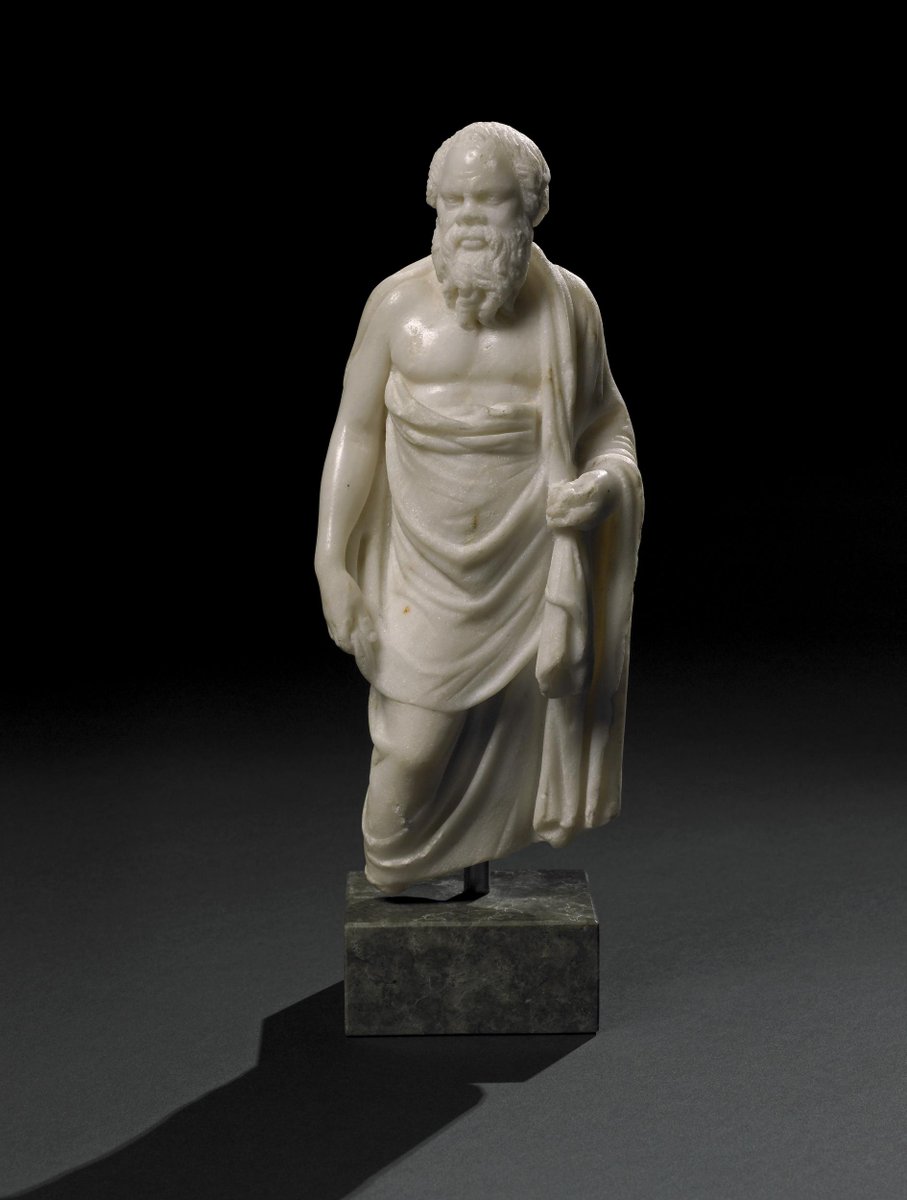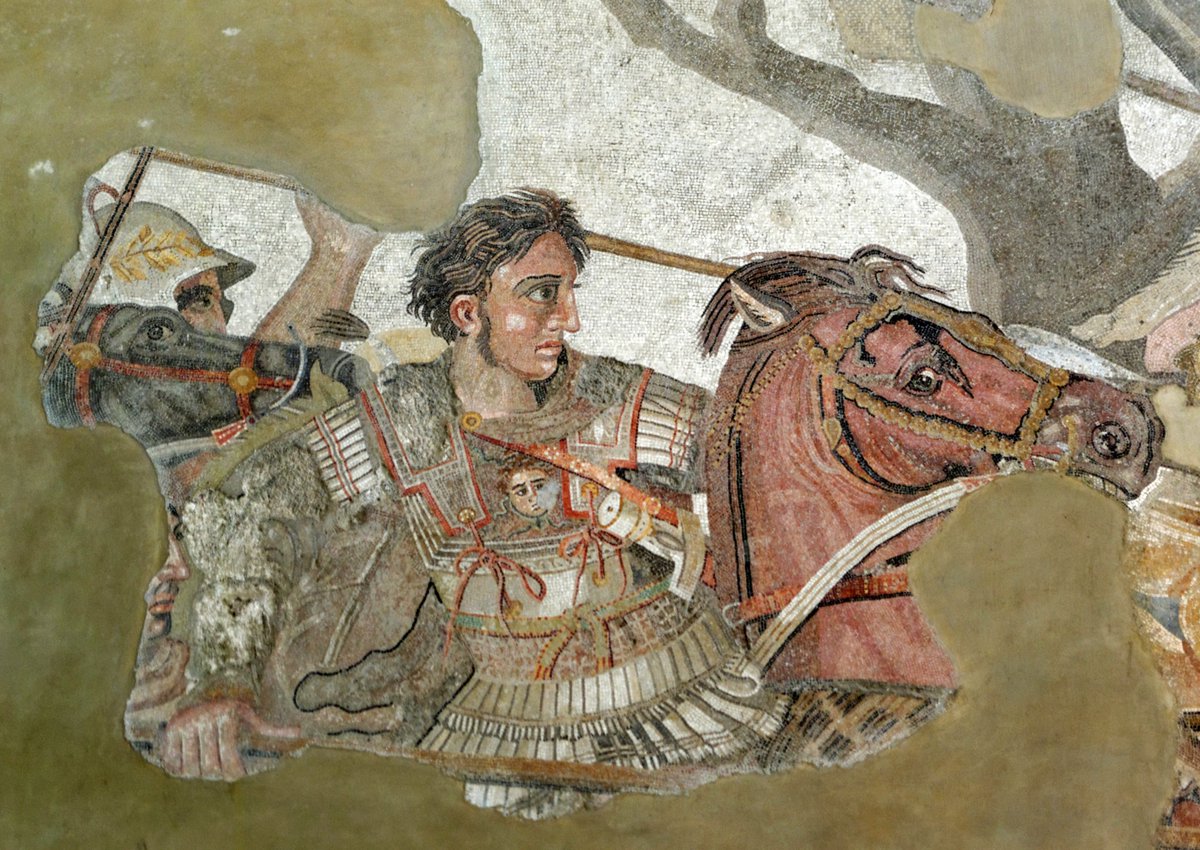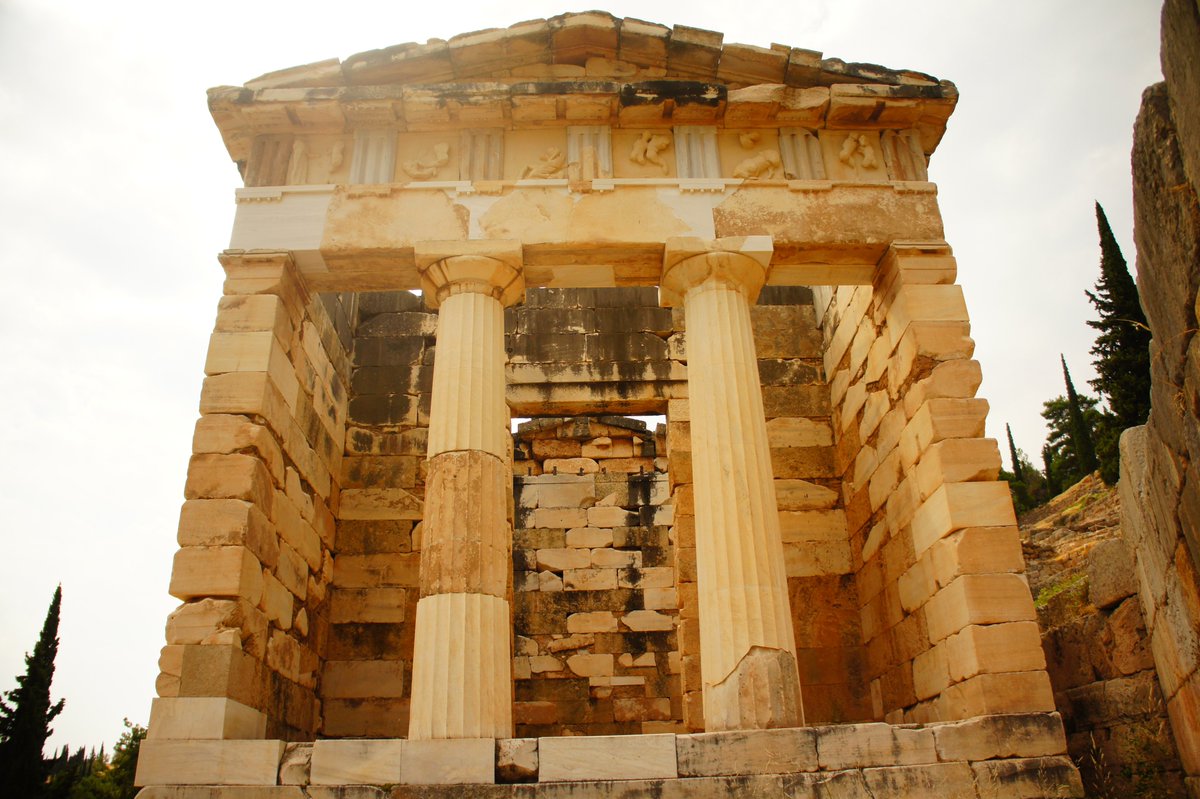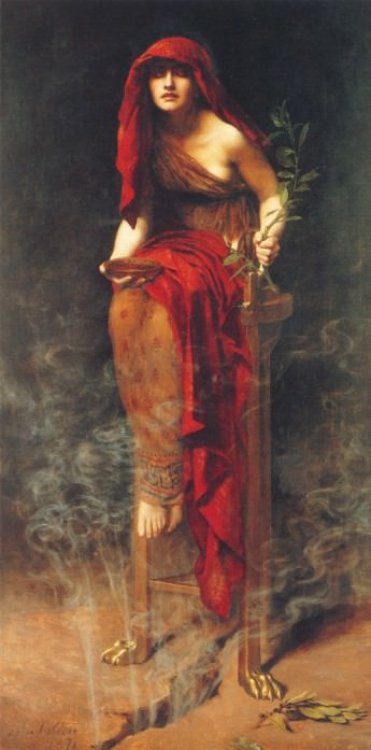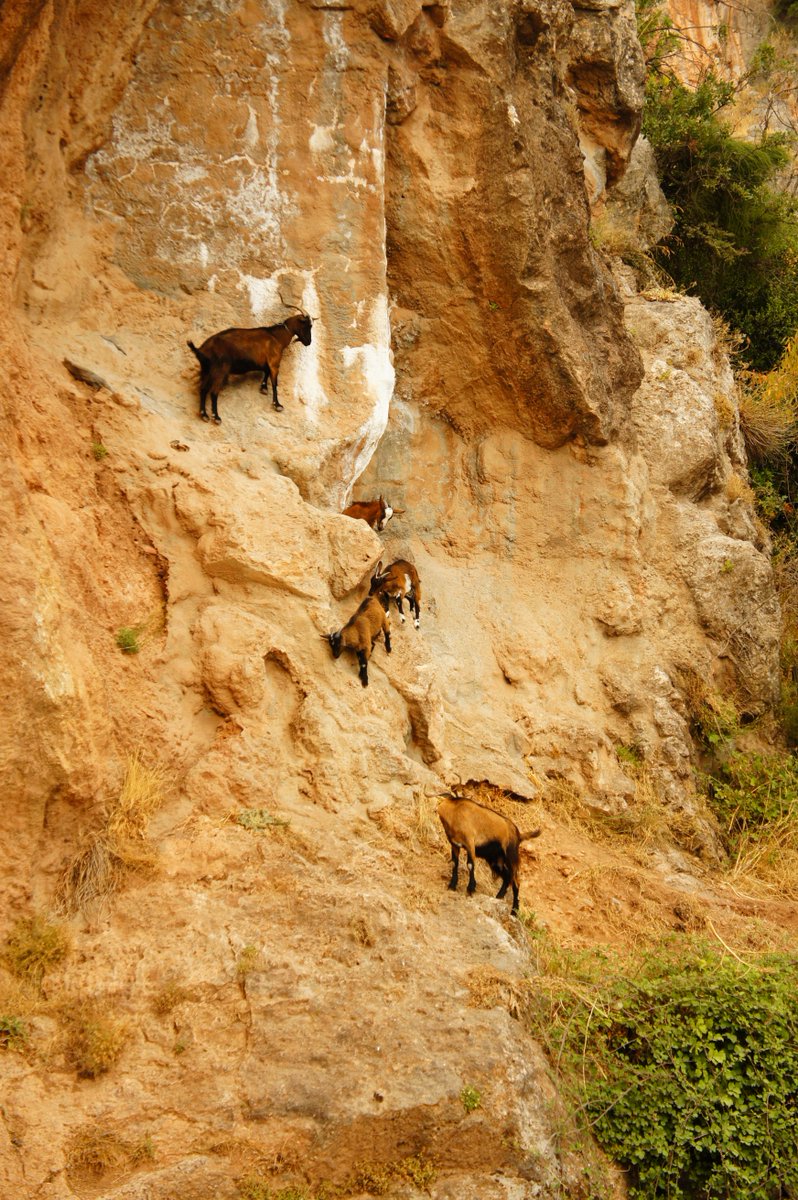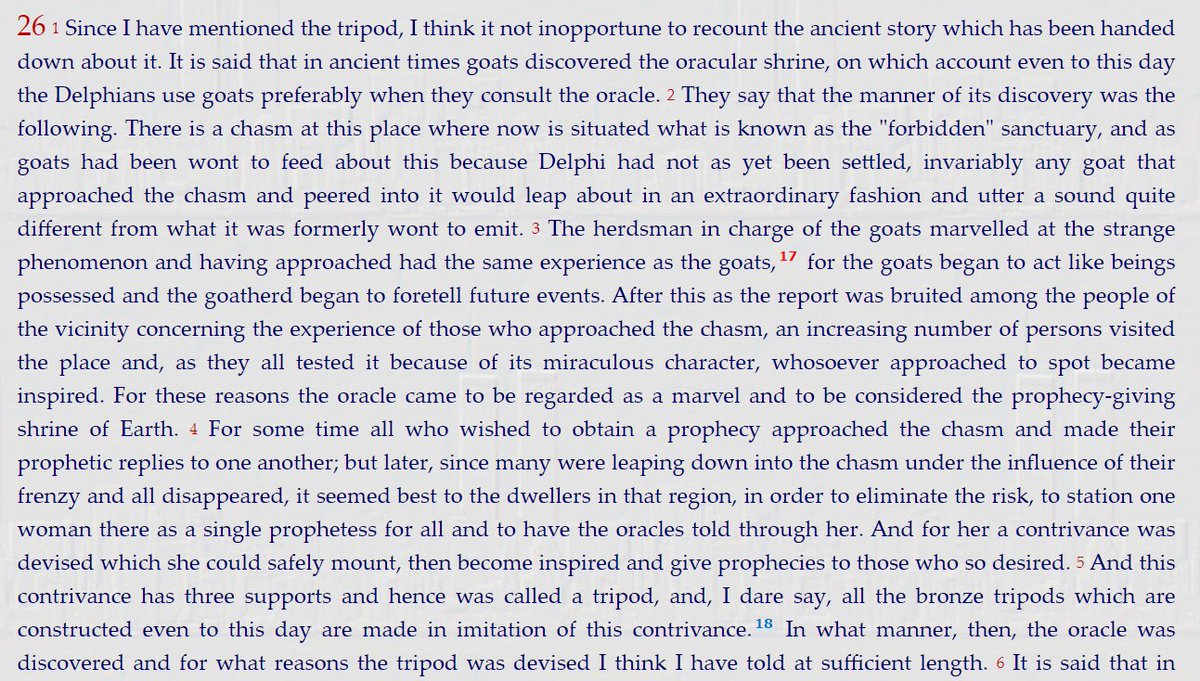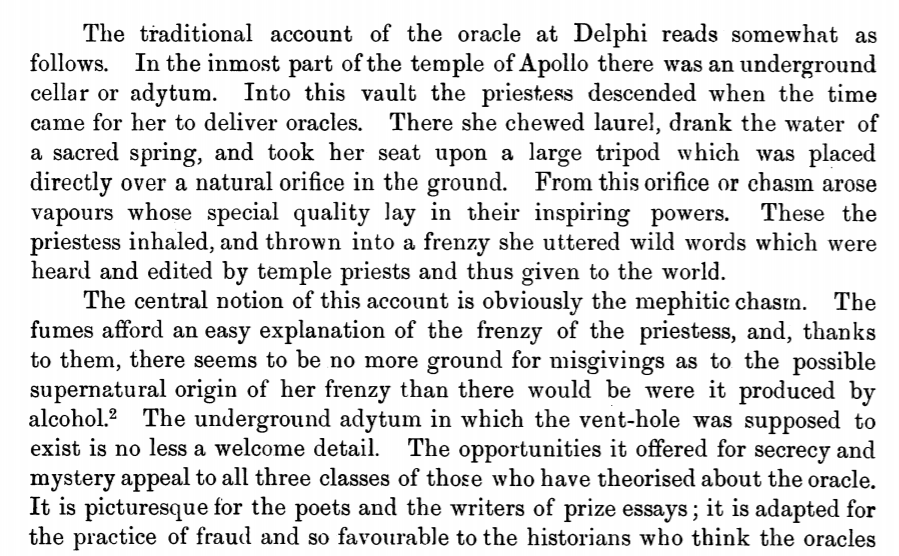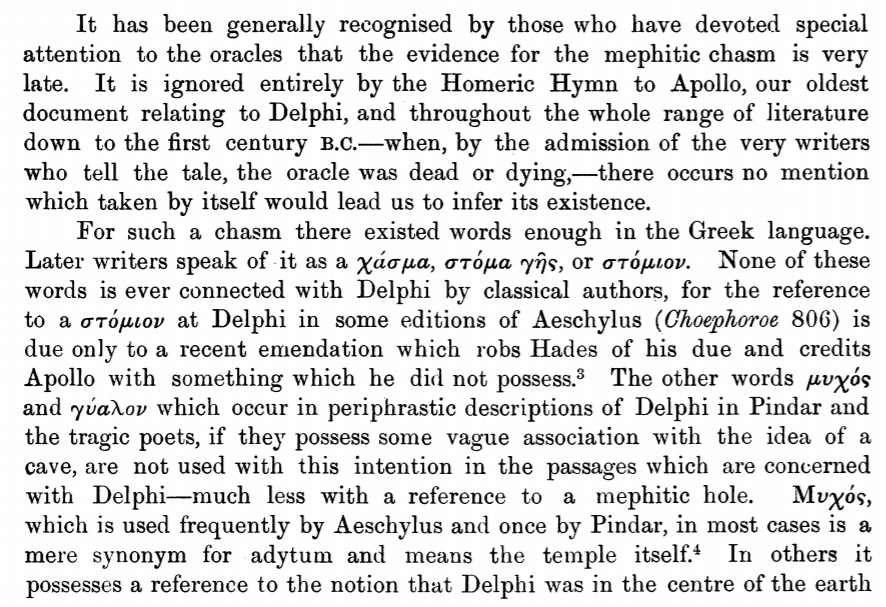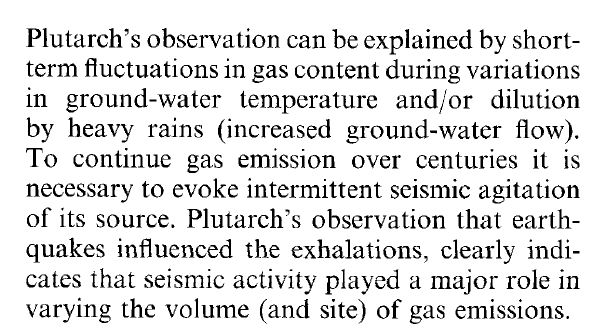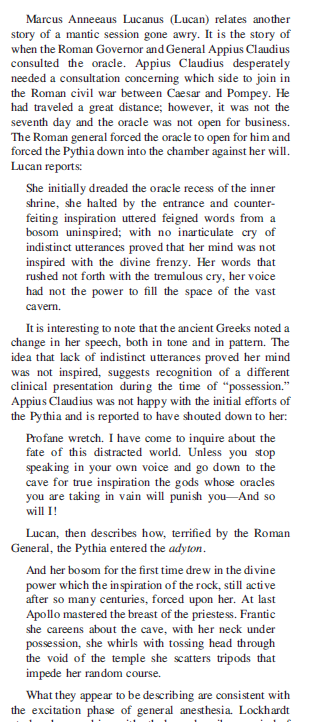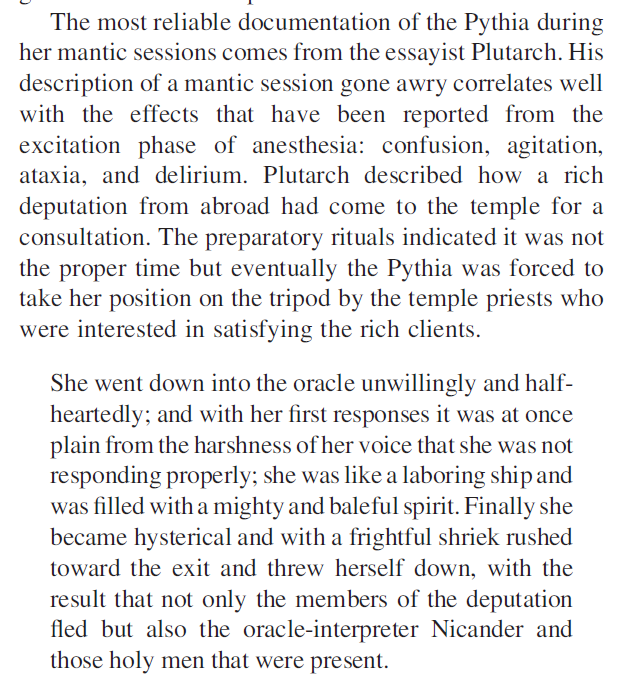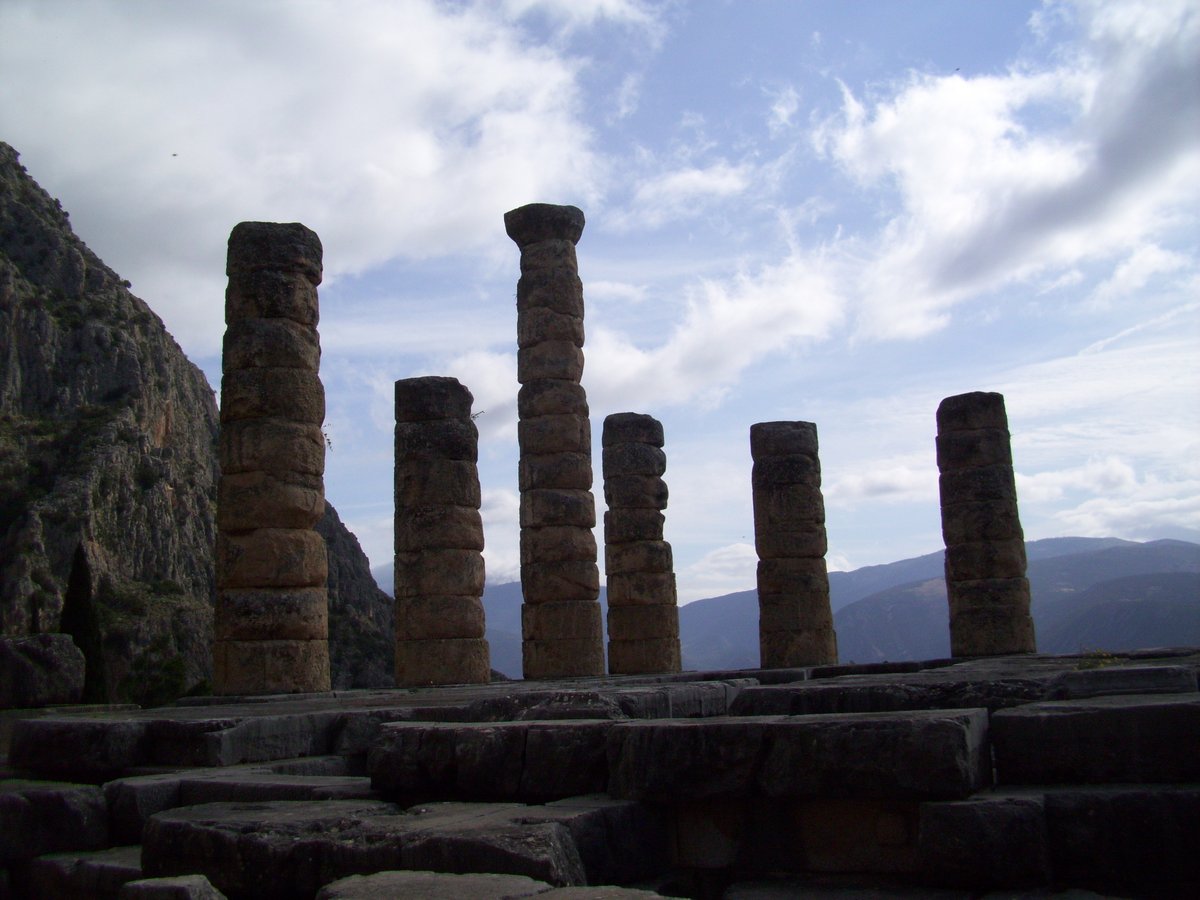[ARCHAEOLOGY THREAD] Apollo’s sanctuary at Delphi is the stuff of legends
For over a thousand years, the famous oracle foretold the futures and fortunes of the city-states and heroes of ancient Greece
This thread explores whether she was stoned on geological vapors
/1
For over a thousand years, the famous oracle foretold the futures and fortunes of the city-states and heroes of ancient Greece
This thread explores whether she was stoned on geological vapors
/1
Set in a mountainous landscape, with a view down to the gulf of Corinth, the site at Delphi is breathtakingly beautiful
Ancient myths describe it as the center of the world, the place where Zeus’s two eagles met, each released at the opposite end of the earth
/2
Ancient myths describe it as the center of the world, the place where Zeus’s two eagles met, each released at the opposite end of the earth
/2
I simply cannot get this point across enough. I’m not usually a romantic person when it comes to archaeology. It’s my job, after all. But, the feeling at this site is … it just is
It gets in your bones and fills your spirit
/3
It gets in your bones and fills your spirit
/3
The architects who designed the sanctuary certainly knew how to play up this feeling. You enter at the bottom and wind your way up. Each terrace has a more epic view to what lay below
Near the top, the theater has the best seats in the house
/4
Near the top, the theater has the best seats in the house
/4
To the ancient Greeks, the landscape around Delphi was the source of oracular powers
From caves to chasms to springwater to gases, there was something in the air around Delphi. Strange feelings were felt by all from rich aristocrats to poor goatherds. Their goats too!
/5
From caves to chasms to springwater to gases, there was something in the air around Delphi. Strange feelings were felt by all from rich aristocrats to poor goatherds. Their goats too!
/5
If you climb up beyond the sanctuary, you’ll hit a fertile plateau. Likely the one used by those goatherds
Climb yet further into the wild mountains and you’ll come to the Korykion Cave where that half-goat, half-god Pan was worshiped
/6
Climb yet further into the wild mountains and you’ll come to the Korykion Cave where that half-goat, half-god Pan was worshiped
/6
This cave was excavated by a French team, and the publication by Amandry describes an astonishing 24,000 astragaloi (sometimes called knucklebones) from sheep or goat
Yes, 24,000 is a lot
Astragaloi were used as dice for games and, here, for fortune-telling
/7
Yes, 24,000 is a lot
Astragaloi were used as dice for games and, here, for fortune-telling
/7
The oracular priestess (the Pythia) down in Delphi only gave prophecies 9x per year (on the 7th day after each new moon in spring, summer & fall)
If you couldn’t get an audience with her, Pan’s goatherd in the Korykian Cave could tell your future in a roll of the sacred bones
/8
If you couldn’t get an audience with her, Pan’s goatherd in the Korykian Cave could tell your future in a roll of the sacred bones
/8
But it was the Pythia who was the most famous prophetess of the ancient world. She’s the one the Athenians consulted when Persia invaded a second time
Her oracle of wooden walls led Themistocles to protect the Athenians with their wooden navy, while the city itself burned
/9
Her oracle of wooden walls led Themistocles to protect the Athenians with their wooden navy, while the city itself burned
/9
Fifty years later, she proclaimed Socrates the wisest of all the wise. He eventually agreed. If only because he alone, out of all people, did not think he knew what he did not know
Think it through. You know it to be true. Wisdom can only come from knowing our ignorance
/10
Think it through. You know it to be true. Wisdom can only come from knowing our ignorance
/10
The Pythia was the one to say that whoever rode Bucephalus would conquer the world. But it wasn’t King Philip of Macedon, but his son who discovered the horse was afraid of its own shadow.
Alexander the Great tamed the beast and rode him to the edges of the known world
/11
Alexander the Great tamed the beast and rode him to the edges of the known world
/11
OK, OK, OK. I’m not taken by any of this over-grandiose horseshit either
It’s clear that many of these oracles recorded in ancient literature acted as narrative devices used to tell the stories that are our histories
/12
It’s clear that many of these oracles recorded in ancient literature acted as narrative devices used to tell the stories that are our histories
/12
Although framed as riddles, the oracles were often transparent pieces of propaganda
In this way they fulfilled a triple role, benefiting the clever historical hero, the witty teller of the tale, and ultimately the oracle, itself
/13
In this way they fulfilled a triple role, benefiting the clever historical hero, the witty teller of the tale, and ultimately the oracle, itself
/13
And the ancient Greek city-states knew this too
The Athenians, Spartans, Macedonians & Romans knew that who controlled the oracle could control history’s onward march. Wealthy monuments & votives were dedicated in Apollo’s honor
There was no greater prize than the future
/14
The Athenians, Spartans, Macedonians & Romans knew that who controlled the oracle could control history’s onward march. Wealthy monuments & votives were dedicated in Apollo’s honor
There was no greater prize than the future
/14
But despite all these politics, none doubted the Pythia’s ability to speak the future. The only questions for mortals was how to interpret her often cryptic replies
For over a thousand years, powerful and poor alike sought out an audience with the Pythia
/15
For over a thousand years, powerful and poor alike sought out an audience with the Pythia
/15
According to myth recorded by the historian Diodorus Siculus (16.26), it was a goatherd & his goats who discovered the special powers of the chasm
He noticed his goats uttering strange sounds. When he approached he “had the same experience as the goats” & began to prophecy
/16
He noticed his goats uttering strange sounds. When he approached he “had the same experience as the goats” & began to prophecy
/16
Several ancient sources describe the prophetic nature of the waters, vapors, chasms, and caves associated with the oracle
The geographer Strabo (9.3.5) describes a cave and a breath from the earth that “inspires a divine frenzy”
/17
The geographer Strabo (9.3.5) describes a cave and a breath from the earth that “inspires a divine frenzy”
/17
Our best source though is Plutarch who besides being a prolific scholar was a priest at Delphi and knew the inner workings of the sanctuary
In an essay “On the Failure of Oracles” he describes these vapors/breaths repeatedly
/18
In an essay “On the Failure of Oracles” he describes these vapors/breaths repeatedly
/18
However, his essay was written because the effects of the oracle seemed to be disappearing.
He explained the disappearance of “the spirits (pneuma) that inspire prophecy” due to rains, thunderbolts, and earthquakes
Yet, it all seems very strange. Doesn’t it?
/19
He explained the disappearance of “the spirits (pneuma) that inspire prophecy” due to rains, thunderbolts, and earthquakes
Yet, it all seems very strange. Doesn’t it?
/19
Well, this case rested cold until excavations at Delphi began in the 19th century
The scholar, A.P. Oppé, wrote an article in 1904 disproving these “traditional accounts” of a chasm or vapors
He plausibly argues these are mythical exaggerations or poetic metaphors
/20
The scholar, A.P. Oppé, wrote an article in 1904 disproving these “traditional accounts” of a chasm or vapors
He plausibly argues these are mythical exaggerations or poetic metaphors
/20
It wouldn’t be the first time that ancient authors used such narrative techniques in their stories
And to clinch the case, he references the recently published archaeological reports that make no mention of a subterranean chasm or chamber for oracular procedures
/21
And to clinch the case, he references the recently published archaeological reports that make no mention of a subterranean chasm or chamber for oracular procedures
/21
Most importantly, there was no geological basis for vapors on the site. In his reading of the local geology, it was “extremely unlikely” that the temple stood on a fault
So, the case was closed and scholarship on Delphi moved on. Other more mundane explanations were needed
/22
So, the case was closed and scholarship on Delphi moved on. Other more mundane explanations were needed
/22
That is until 20 years ago when an interdisciplinary team decided to reinvestigate
De Boer and Hale (2000) presented a geological investigation of the area that showed that, contrary to Oppé, the temple didn’t just sit on one fault but at an intersection of two faults!
/23
De Boer and Hale (2000) presented a geological investigation of the area that showed that, contrary to Oppé, the temple didn’t just sit on one fault but at an intersection of two faults!
/23
Chemical analyses of local springwater & travertine deposits showed the presence of methane, ethane, and ethylene. Spiller, Hale, and de Boer (2002) show that the effects of inhaling these gases is similar to ancient descriptions of mantic inspirations at Delphi
/24
/24
Their analyses demonstrate that earthquakes (which cause friction that lead to gases forming from rocks below) might have triggered periods when these gases were present in large quantities and others when they were absent
/25
/25
The clearest description of the strength of these vapors comes from two events when things went wrong
In the first, told by Lucan, Spiller and others show how the results were similar to modern uses of ethylene
/26
In the first, told by Lucan, Spiller and others show how the results were similar to modern uses of ethylene
/26
In a second, told be Plutarch, things go so wrong that the Pythia dies
This kind of vivid story, told by a reliable source who lived and worked at the sanctuary, seems too clear to doubt the existence of Delphic vapors
/27
This kind of vivid story, told by a reliable source who lived and worked at the sanctuary, seems too clear to doubt the existence of Delphic vapors
/27
I hope this thread about ancient drugs & ritual gets you to think about how scholars make history
We’re constantly discovering & re-discovering the past
Despite what your textbooks may say, history isn’t set in stone
History is constantly in the process of being written
/28
We’re constantly discovering & re-discovering the past
Despite what your textbooks may say, history isn’t set in stone
History is constantly in the process of being written
/28
For citation to images and readings used here, see this bibliographical thread: https://twitter.com/FDibbleCitation/status/1292444364115935233">https://twitter.com/FDibbleCi...
For another thread on ancient narcotics, check out this: https://twitter.com/FlintDibble/status/987262575497883648?s=19">https://twitter.com/FlintDibb...

 Read on Twitter
Read on Twitter![[ARCHAEOLOGY THREAD] Apollo’s sanctuary at Delphi is the stuff of legendsFor over a thousand years, the famous oracle foretold the futures and fortunes of the city-states and heroes of ancient GreeceThis thread explores whether she was stoned on geological vapors/1 [ARCHAEOLOGY THREAD] Apollo’s sanctuary at Delphi is the stuff of legendsFor over a thousand years, the famous oracle foretold the futures and fortunes of the city-states and heroes of ancient GreeceThis thread explores whether she was stoned on geological vapors/1](https://pbs.twimg.com/media/Ee-qpZdXkAEIO7r.jpg)
